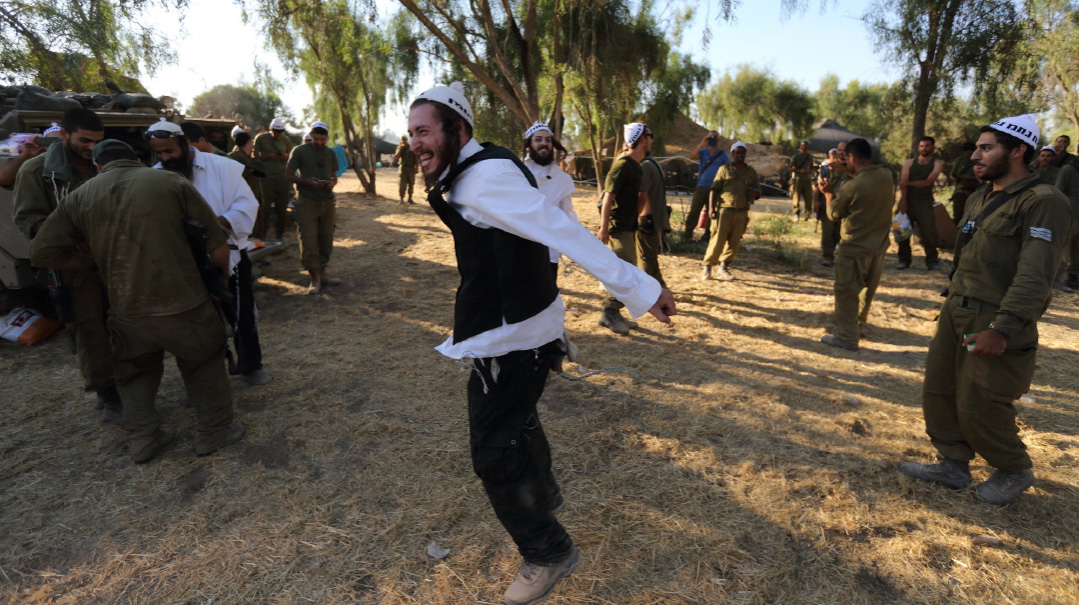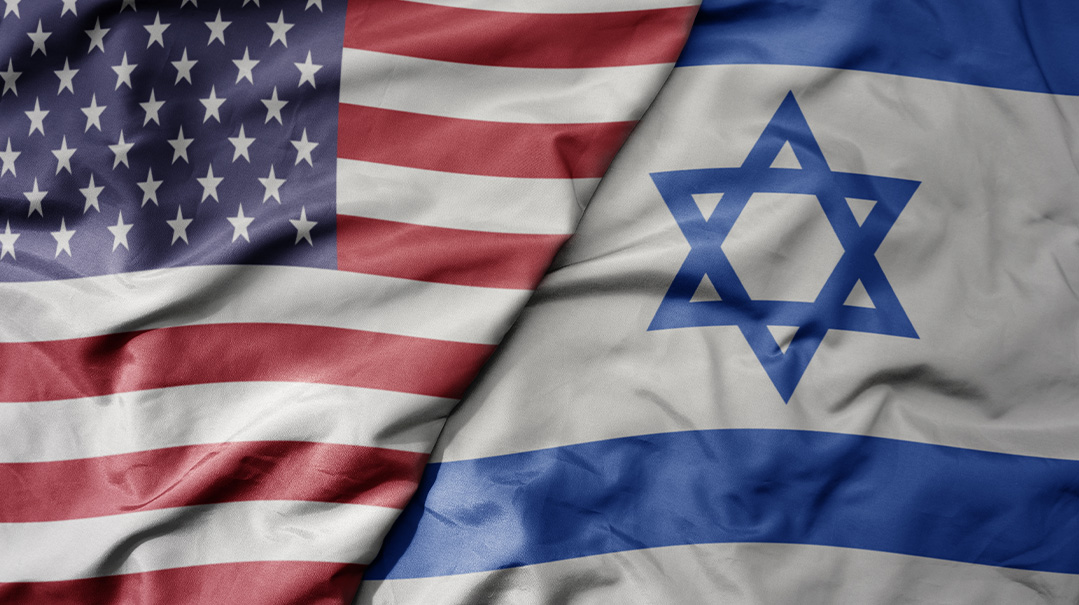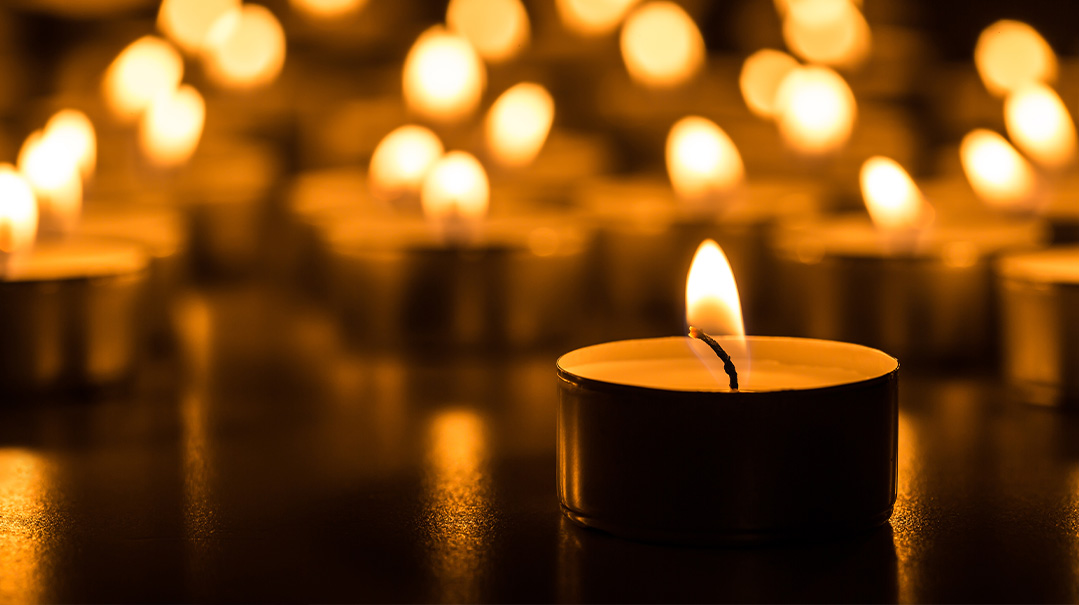Bringing the Truth to Light

The two miracles of Chanukah were Hashem’s response to the Greek denial of a realm above nature
Chanukah falls at the darkest time of the year, the time when the nights are longest. And the twelve months since last Chanukah have certainly been dark ones for most of us.
Yet just as the darkness of night better offsets the Chanukah lights and increases their glow, so too if we genuinely appreciated the meaning of those lights, they would have the power to dissipate much darkness in our lives, both as individuals and as a people.
THE MIDRASH (Bereishis Rabbah 2:4) expounds the word “darkness” at the beginning of Bereishis (1:2) as a reference to the Greek exile: The Greeks “darkened the eyes of Israel with their decrees, for they would say to them, ‘Write for yourselves on the horn of an ox that you have no portion in the G-d of Israel.’ ”
The Greeks did not just deny that the Jews were G-d’s chosen people; they denied a transcendental realm altogether. For that reason, bris milah, the idea that the natural human form could become whole through a mitzvah requiring removal of a part of that form, was anathema to them. Nothing could be more perfect than nature. Bris milah on the eighth day — eight representing a realm beyond nature — proclaims the opposite.
Rabbi Immanuel Bernstein, in a profound new work, Chanukah: Capturing the Light (Mosaica), explicates the meaning behind the Greeks’ command to write on the “horn (keren) of the ox,” following the Shelah Hakadosh. The Shelah connects the Greeks’ command to the ox with one horn on its forehead, which, Chazal tell us, Adam Harishon sacrificed after he ate of the forbidden fruit.
That sacrifice, on the one hand, served as a sign that Adam had become more animal-like, and less spiritual, by virtue of his sin. Yet it also suggested a way back. For keren means not only a horn, but also a beam of light — like that which emanated from Moshe Rabbeinu when he came down from receiving the Tablets. Man can transcend his animal nature through Torah.
The Greeks elevated man by proclaiming unaided human reason to be nature’s finest product and the arbiter of all things. But at the same time, they lowered him by locating him firmly in the animal kingdom, with no means to rise above.
The two miracles of Chanukah, two departures from the natural order, were Hashem’s response to the Greek denial of a realm above nature. First, the military victory, which ultimately came, as Zerubavel had prophesized two hundred years earlier, “not through an army and not through might, but through My spirit” (Zechariah 4:6). And second, the miracle of the oil that began with the rededication of the Beis Hamikdash, on the very day that the Chashmonaim completed their military victory, and which revealed the miraculous nature of the military victory as well.
RAV DOVID COHEN, Rosh Yeshivas Chevron, asks in his Yemei Chanukah (maamar 8): Why do we refer in the al hanissim of Chanukah, recited in Shemoneh Esreh and Bircas Hamazon, to the Greeks’ efforts to cause us to forget Hashem’s Torah, but not to their efforts to force us to write on the horn of the ox that we have no part in the G-d of Israel? The refusal to do the latter, after all, was the casus belli over which the Maccabees went to war.
Following the Ramchal in Derech Hashem, he notes that Greek anger at the Temple service was directed principally against the Menorah for two reasons. First, the Menorah represented chochmas haTorah. One who wishes to acquire Torah wisdom is advised to daven toward the south, where the Menorah stood in the Heichal. Second, the Menorah proves that the Shechinah dwells in our midst. Long before the miracle of the oil at the time of Chanukah, there was a daily miracle involving the Menorah — the oil in the middle ner, representing the wisdom of Torah, burned for a full 24 hours, while the same amount of oil in the other oil lamps burned only until the morning.
Rav Cohen answers his question that the Torah and the Shechinah dwelling in our midst are two sides of the same coin. Only because Hashem took Bnei Yisrael to Him were they able to receive the Torah at Sinai, and it is through the dedication the lomdei Torah that the deveikus to HaKadosh Baruch Hu is maintained.
That is hinted to in the brachah recited upon seeing a great Torah scholar — “Who shared [chalak] from His wisdom to those who fear Him.” The term chalak contrasts with “Who gave [natan],” which one recites upon seeing a great scientist. The former term implies an ongoing connection. As the Vilna Gaon writes “to the ones who received the Torah, who are chelek Eloka mi’maal [i.e., contain the breath the Divine] it is appropriate to say she’chalak — for He has given a chelek (part) of Himself.” Through the study of the Torah, we gain access to the Divine Mind, as it were.
Nowhere is the connection between those who learn Torah and Hashem more manifest than in the Oral Torah, through which the words of men of flesh and blood gain the status of Torah itself. Not by accident is the specific aspect of Torah represented by the Menorah, the focus of Greek wrath, the Oral Torah. (The Aron Hakodesh represents the Written Torah.)
RAV YITZCHOK HUTNER elaborates on the radical distinction between Torah knowledge and all other forms of knowledge (Chanukah 9). All other branches of knowledge study nature in stasis. Torah, by contrast, is the study of a world in the process of becoming.
For the Greeks, the world reflects no Divine purpose and is moving toward no end: It just is and has always been. But for us, Creation is imbued with purpose and is moving toward a particular end.
There is no mitzvah in the Torah, our Sages teach, that does not contain within it the power of techiyas hameisim, revivication of the dead. Techiyas hameisim represents the end of the natural order, in which Hashem’s presence is hidden. That obscuration of Hashem came into being with the Sin of Adam and will end with the final revelation of Hashem: “Machazti [I struck, i.e., obscured Myself from the Creation, through death]; v’ani erapei [I will heal by causing that barrier to be removed and bringing death to an end]” (Devarim 32:39).
Torah study is at once the study of a world coming into being, as Creation moves toward its final destination, and the most powerful means of bringing about that goal. Rav Hutner finds that hinted to in a comment of the Ramban in his introduction to Milchemes Hashem: “There is no such thing as a perfect proof in the study of Torah,” as, for instance, there is in geometry.
The Ramban is not denigrating Torah study versus the study of geometry; he is highlighting their radically different subject matter. Geometry deals with a world in stasis, and therefore perfect proofs are possible: Torah deals with a world in flux, in the process of coming into being. In such a world, no perfect proofs are possible.
There are two ways in which one perceives light. One can deduce it from one’s ability to see. Or one can look directly at the light. Similarly, it is possible to discern Hashem in nature. But one apprehends Him much more directly through Torah. For that reason, one is enjoined from breaking from Torah study to comment, “How beautiful is that field.”
On Chanukah we look directly at the lights, and it is forbidden to use them for any other purpose. When we do, we are reminded not only of our privilege to be uniquely connected to Hashem — contrary to what the Greeks would have had us write on the horn of the ox — and, by virtue of that connection with Hashem, to not only gain access to His plan for the world, but also to be participants in bringing that plan to realization.
“With you is the source of life: by Your light may we see light” (Tehillim 36:10).
A lichtige Chanukah.
Originally featured in Mishpacha, Issue 839. Yonoson Rosenblum may be contacted directly at rosenblum@mishpacha.com
Oops! We could not locate your form.







